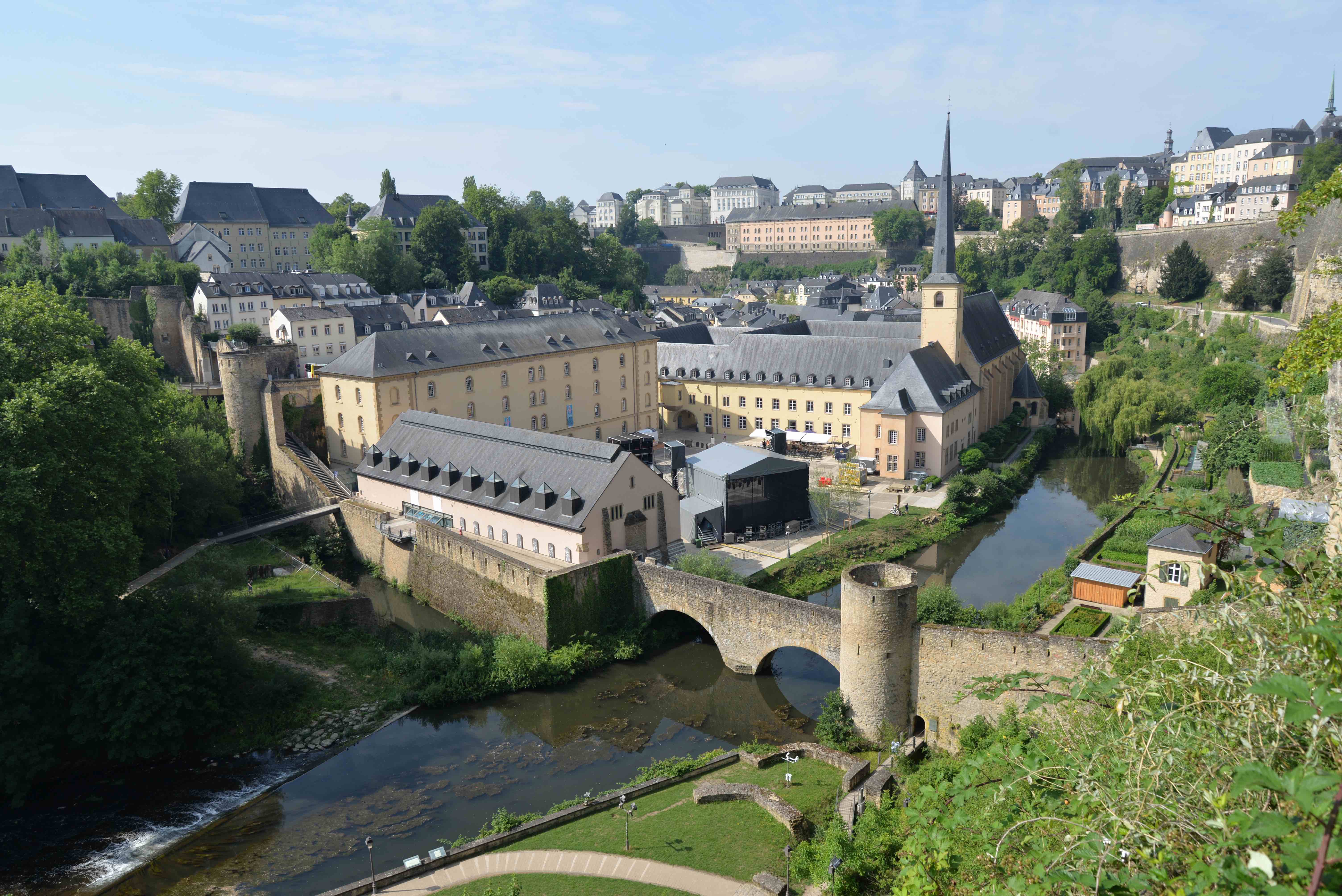The Centre Culturel de Rencontre Abbaye de Neimënster, or CCRN, located in the heart of Luxembourg's old quarter, which is a UNESCO World Heritage Site and was inaugurated in 2004, bases all its activities around the theme of ‘dialogue of cultures, culture of dialogue’.
THE HERITAGE SITE
The first Neimënster Abbey was a Benedictine abbey built on the Altmünster plateau, which was destroyed in 1542. A new abbey was built in 1606, but was destroyed by fire in 1684. Work on the current abbey began in 1688 and it was extended in 1720. Like all the others, the abbey was secularised when the Directoire legislation was introduced in Luxembourg in 1796. It was used as a police station, prison, orphanage and military hospital before becoming Prussian barracks after Napoleon's defeat in 1815. It became a state prison in 1867, and remained so until 1985, with a very difficult period during the Second World War when political prisoners arrested by the Gestapo were incarcerated there before being transferred to the camps.
The renovation of the site at the close of the prison was modelled on the French CCRs, with which Jacques Rigaud, Chairman of RTL, was very familiar, as was Claude Frisoni, the first director, who was also in charge of the first European capital bid. They have drawn on Fontevraud for the renovation and other structures for the programming. The theme chosen was ‘Dialogue of cultures and culture of dialogue’. A law was passed to create this CEMR. The vast programme of restoration and refurbishment enabled the historic character of the buildings to be respected, while at the same time installing the modern functions appropriate to a cultural meeting and seminar centre covering more than 13,000m2, including public areas and a fully-equipped auditorium. The structure was inaugurated in 2004 after 10 years of work.
Since 2004, Neimënster Abbey has been a public establishment whose activities are of general interest. It has legal personality, enjoys financial and administrative autonomy and is placed under the supervision of the Luxembourg Minister of Culture. Neimënster Abbey has four sources of funding: the most important is a subsidy from the Ministry of Culture, followed by economic activities, contributions from spectators and visitors, and private companies, through patronage, sponsorship or sponsorship.
The centre's aim is to guarantee the quality of its programming, the widest possible access to culture and the independence of the institution. The centre is a key venue for Luxembourg's major public events, including the signing of Bulgaria and Romania's accession treaty to the European Union on 25 April 2005, the 3rd Transatlantic Encounters, and more recently visits from Belgian sovereigns.
THE CULTURAL PROJECT
Neimënster Abbey has a dual vocation: to be both a place of creation and a place of welcome, open to the general public, young people, associations and creative artists. Meetings, exchanges, collaborations and co-productions are the keystone of a unifying programme.
The Abbey is also a favourite venue for conferences and seminars, congresses, meetings and major corporate events. Around 700 to 800 events and cultural activities are organised throughout the year, in addition to heritage tours, with particular attention paid to multilingualism, diversity and plurality, and the place of women. As part of its commitment to the environment, the centre has also asked the "Fédération des Apiculteurs" to install several beehives in the site's gardens.

